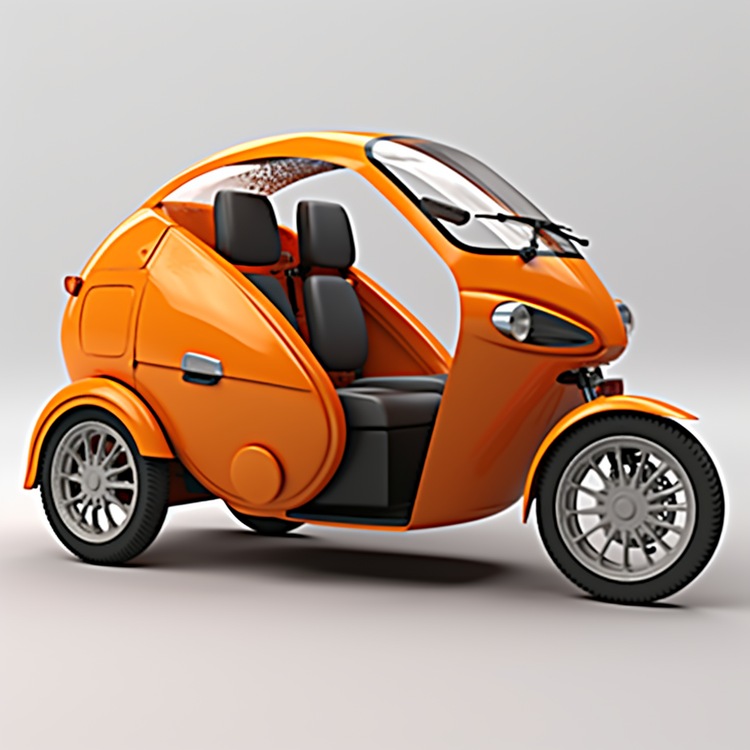Ergonomics and accessibility design for single-seat enclosed vehicles
Designing single-seat enclosed vehicles for urban commuting requires balancing comfort, accessibility, and practical engineering constraints. This article examines ergonomic layout, accessibility features, safety, weatherproofing, and the implications of battery, charging, maintenance, regulation, and sustainability for small enclosed EVs used in micromobility and multimodal transport.

Designing single-seat enclosed commuter vehicles for urban use demands careful attention to human factors, access, and the constraints of micromobility. Ergonomics must account for varied body sizes and frequent ingress and egress in tight spaces, while accessibility features should enable independent use for people with limited mobility. At the same time, designers need to reconcile safety, weatherproofing, and compact powertrain solutions to keep these enclosed EVs practical for everyday commuting.
Ergonomics for single-seat enclosed commuters
Ergonomic design begins with a human-centered seating and control layout that accommodates a range of body shapes and mobility levels. Seat geometry, lumbar support, and adjustable pedal or footrest positions reduce fatigue for longer commutes. Control placement—steering, braking, and turn indicators—should be intuitive and reachable without excessive reach or trunk rotation, improving safety and comfort. Visibility is also critical: low glare glazing, properly placed mirrors or camera displays, and clear sightlines help drivers navigate urban environments and interact with other road users.
Accessibility features for urban enclosed EVs
Accessibility involves more than ramps or swivel seats; consider low step-in thresholds, wide-door openings, and handles placed for leverage. For users with reduced strength or dexterity, assisted doors, automatic seat adjustments, and foot-operated entry aids make the vehicle more inclusive. Interior controls and displays should support legibility and tactile feedback for users with visual or motor impairments. Designing for modular accessories—securement points for mobility aids or optional transfer seats—can broaden usability without excessively increasing vehicle footprint.
Safety and weatherproofing in micromobility design
Enclosed single-seat vehicles must balance lightweight construction with occupant protection. Structural reinforcement around the cabin, crumple zones scaled to vehicle mass, and energy-absorbing materials contribute to crash resilience in mixed urban traffic. Integrating weatherproof seals, effective defogging, and climate ventilation systems ensures usability in rain, cold, or heat, improving year-round reliability. Active safety systems—stability control, regenerative braking tuned for commuter use, and basic collision warning—can be scaled to the vehicle class to reduce risk without adding undue complexity.
Battery, range, and powertrain trade-offs
Battery sizing and powertrain design are pivotal for commuter expectations. A compact battery and efficient single-motor layout can keep weight low and improve handling, while offering practical range suited to short urban trips. Designers should consider real-world range under varied loads and weather conditions, and the trade-off between higher capacity and vehicle mass. Thermal management for the battery is necessary when operating in extreme temperatures; combined with lightweight materials and efficient drivetrains, this supports predictable EV performance for daily commuting.
Charging, maintenance, and insurance planning
Charging strategy should fit urban lifestyles: support for standard AC charging at home or curbside, plus compatibility with common public chargers, helps maximize convenience. Maintenance considerations include easily replaceable wear items (tires, brakes), modular electrical components, and diagnostics that simplify service in local workshops. Insurance for this vehicle class will depend on classification and local regulation; designers and fleet operators should anticipate requirements around liability and safety equipment. Thoughtful design that reduces repair complexity can lower operating costs and downtime.
Multimodal integration, regulation, and sustainability
Single-seat enclosed vehicles often serve multimodal journeys, so compatibility with public transit policies, micromobility parking, and shared mobility systems matters. Regulators may classify these vehicles in micromobility, light quadricycle, or low-speed vehicle categories—each with different equipment and driver requirements—so designers should plan for adaptable compliance. Sustainability considerations span recyclable materials, lifecycle battery management, and energy-efficient driving modes. The vehicle’s role in reducing urban emissions and space consumption depends on realistic deployment models and integration with existing transport networks.
Designing enclosed single-seat commuter vehicles requires reconciling human-centered ergonomics and accessibility with technical constraints of batteries, charging, and structural safety. Careful attention to ingress/egress, control layouts, weatherproofing, and maintainability helps create practical, inclusive micromobility options. Regulatory alignment and sustainable material choices enhance long-term viability and support multimodal urban transport goals.






